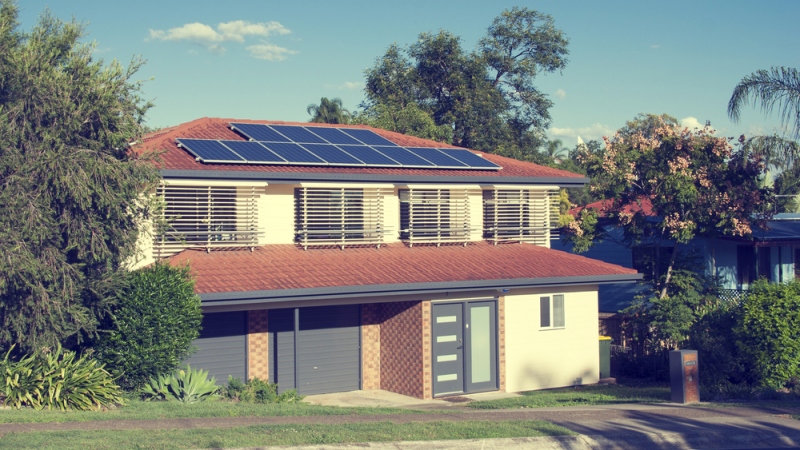Many people dream of building their own home, and as more Millennials and eco-conscious consumers enter the housing market, demand for more sustainable ‘green’ homes is growing rapidly. Even better, this increased demand is driving prices for greener building alternatives down, while encouraging more and more contractors to offer these alternatives. Whether it’s making use of recycled or reclaimed materials in your home’s construction, angling the building to take advantage of the sun for solar power and to harness rainwater, or simply building smaller so that fewer resources are consumed during construction, building your own green home has never been easier. Let’s find out how!
Use local materials and techniques
While using the latest ‘eco-concrete’ or recycled materials to construct your home sounds great on paper, it’s of little benefit to the environment if those materials have to be shipped from overseas and then transported vast distances to reach your site. The most important factor of all when designing your green home is taking advantage of the best options that are locally available first. In some places there are ancient building practices (such as building with cob, rammed-earth and even straw) that are making a comeback. Ironically, if you can find out what people were building with in the area a few hundred years ago, you’ve probably put your finger on the most sustainable technique for creating a home in that region today! Combined with modern eco-friendly finishes, energy efficient appliances and off-grid solutions, sustainability doesn’t have to come at the cost of comfort.
Build up, not out
There are several advantages to building a two-story house with the same amount of floor space as a single story laid out horizontally. Cost is reduced, as the foundation and roof are often the biggest costs during a build. Energy efficiency is also improved, and because a taller, thinner building exposes a smaller surface area to the elements, it’s easier to maintain the ideal indoor temperature. Plus, better views, right? It doesn’t work for every project, but if the choice is yours then build up rather than out.
Design with solar in mind
One of the biggest benefits of building a new home from scratch is that you can orient the building to take full advantage of the sun. Make sure to do your homework beforehand so you get this right. If the potential is there and you have sufficient capital, you might even be able to build a net zero energy home that produces more electricity than it consumes. Depending on where you live, this excess energy can be sold back to the local grid, and eventually more than pays for itself.
Build smaller
Building smaller doesn’t just bring the cost of the overall project down, it also means there’s less house to heat or cool for years to come. Clever planning so that rooms are able to perform several functions at once comfortably is crucial to getting this right, so be prepared to revisit your plans several times. Having an open-plan kitchen, sitting room and dining area is one of the best ways to make less space look like more. Pay attention to the layout of the place you’re currently living in, making note of areas that you seldom use – these are the easiest to incorporate into another space in your new eco-home.
Use contractors who understand your viewpoint
When bringing architects, contractors and builders on board, it’s crucial to the integrity of the project that they understand what you’re aiming for, and that you care about how it’s accomplished too. This might mean using a more durable and ecofriendly material even if it’s slightly more expensive, hiring equipment from a provider like Forklift Guys rather than buying it, or bringing in local craftsmen who have experience in a less traditional building technique than what they’re used to.
Design your home to need less water
If you’ve ever lived in ‘traditional’ housing during a prolonged water disruption, you’ll be painfully aware of how much potable water literally goes down the drain in modern households. This doesn’t have to be the case when you build your own green home. Capture rainwater from your gutters to use for irrigating the garden or as part of a gray water system, or even put in composting toilets that don’t require any water at all. It goes without saying that faucets and showerheads should be of the low-flow variety.
Be flexible
A truly green home works with the environment around it, and sometimes our preconceived ideas about what they should look like can be our biggest enemies. Keep your eyes and mind open to new ideas, seemingly weird ways of doing things, or materials you’re unfamiliar with. Building your own home is a journey of discovery, often fraught with setbacks, unexpected costs and the need for compromise – but keep your end goal in mind at all times and you’ll be rewarded with a home you’ll be proud to call uniquely yours!
